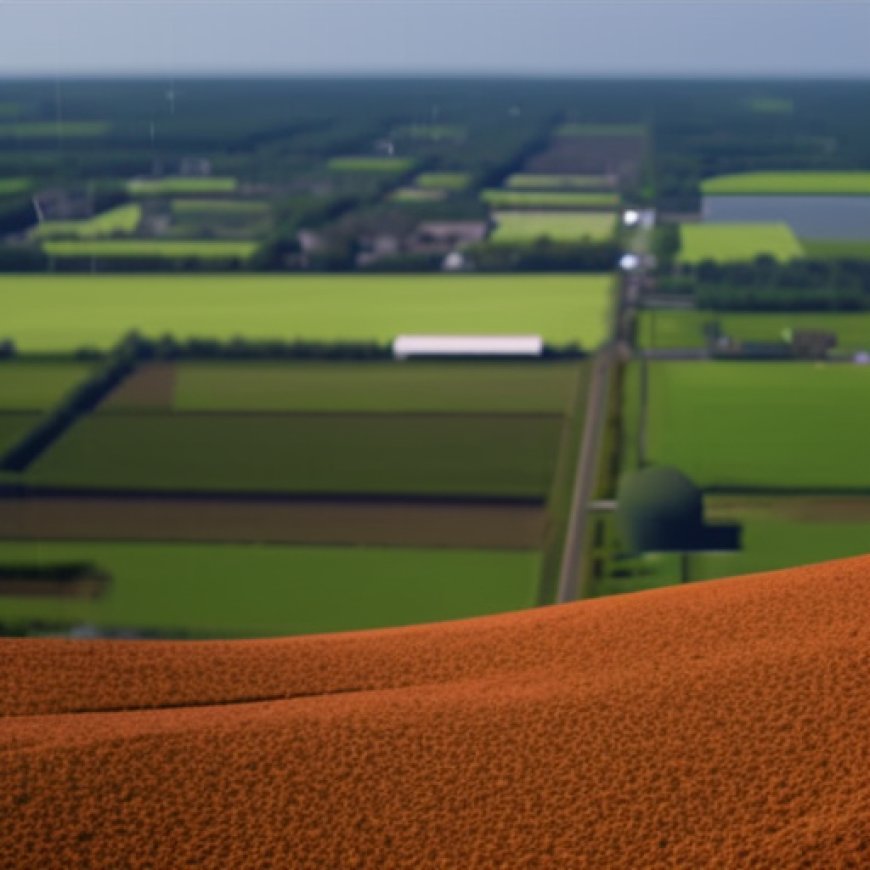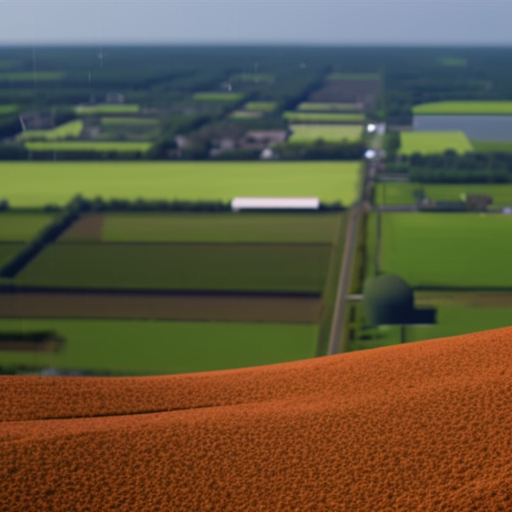Hochul announces record investment in agricultural stewardship
Hochul announces record investment in agricultural stewardship Oneida Dispatch


Record Funding for Climate Resilient Farming Grant Program in New York

During Earth Week, Governor Kathy Hochul announced that the State of New York is investing a record amount of funding in agricultural stewardship programs. As part of this investment, $28.75 million is now available for on-farm projects through the Climate Resilient Farming (CRF) grant program.
Supporting Sustainable Development Goals
The Climate Resilient Farming grant program aligns with several Sustainable Development Goals (SDGs) set by the United Nations. These goals include:
- Goal 2: Zero Hunger
- Goal 6: Clean Water and Sanitation
- Goal 13: Climate Action
- Goal 15: Life on Land
The funding provided through the CRF program aims to help New York’s farmers reduce greenhouse gas emissions, protect water sources, ensure soil health, and increase on-farm resiliency to the effects of climate change.
Increased Funding for Agricultural Programs
The Fiscal Year 2025 Budget allocates $81.8 million through the Environmental Protection Fund (EPF) for agricultural programs and initiatives. This represents a $4 million increase from the previous year. The funding supports projects such as the Climate Resilient Farming grant, which enables farms to implement environmentally sustainable practices and combat climate change.
Governor Hochul emphasized the importance of supporting farmers in their efforts to produce food while protecting natural resources. She stated, “The Climate Resilient Farming grant program is providing record funding to further assist our farmers and their Soil and Water Conservation Districts to elevate water quality and help New York State meet our climate goals.”
Record Funding for CRF Program
Round 8 of the CRF program offers a record amount of funding this year, nearly $30 million. This is double the amount that was available in the previous round of the program.
The funding for Round 8 is provided by the State’s Environmental Protection Fund (EPF). Additionally, for the first time, the United States Department of Agriculture (USDA) and its NYS Connects: Climate Smart Farms and Forests Project are providing additional funding through the Partnerships for Climate Smart Commodities Program.
Available Funding Tracks
The CRF program offers funding in various tracks to support different types of projects. The available tracks include:
- Track 1A: Livestock Management: Alternative Waste Management & Precision Feed Management (NYS funds)
- Track 1B: Manure Storage Cover and Methane Capture Projects (federal funds)
- Track 2: Adaptation & Resiliency (NYS funds)
- Track 3A: Healthy Soils NY (Systems and Best Management Practices that support soil health and agroforestry) (NYS funds)
- Track 3B: Soil Health Systems (federal funds)
- Track 4: Agricultural Forestry Management (for carbon sequestration) (NYS funds)
Projects related to livestock and manure management, water management and erosion control, and soil health management are eligible for funding. Examples of eligible practices include manure storage cover and methane capture projects, prescribed grazing, cover crops, conservation tillage, irrigation, and tree planting.
New Funding Track: Agricultural Forest Management
This year’s program introduces a new funding track called Agricultural Forest Management. Approximately $1 million is allocated to support the development of healthy productive forests and afforestation on agricultural lands. These goals are part of the New York State Climate Action Council’s Scoping Plan.
Impact of CRF Program
Through seven rounds of CRF funding, a total of $36 million has been awarded to 396 farms. These farms are estimated to deliver the equivalent of 454,000 metric tons of CO2e per year in emissions reductions. This reduction is equivalent to removing 108,053 cars from the road for one year.
Application Process
The County Soil and Water Conservation Districts in New York State can now apply on behalf of farmers for these competitive grants. The application and additional information can be found on the Department’s website at https://agriculture.ny.gov/funding-opportunities. Project proposals must be submitted by 5:00 p.m. on June 24.
Additional Agricultural Initiatives
In addition to the CRF program, the Fiscal Year 2025 Budget includes several other agricultural initiatives. These initiatives include funding for Cornell Soil Health, a $1.25 million increase for the Soil and Water Conservation Districts, and the establishment of the Eastern Finger Lakes Coalition. The Eastern Finger Lakes Coalition will direct investments into Soil and Water Conservation Districts in the region to support agricultural and resiliency-related projects on farms. These projects aim to improve soil health, reduce water quality impairments, and promote the use of cover crops.
SDGs, Targets, and Indicators
1. SDGs Addressed or Connected to the Issues Highlighted in the Article:
- SDG 2: Zero Hunger
- SDG 6: Clean Water and Sanitation
- SDG 13: Climate Action
- SDG 15: Life on Land
2. Specific Targets Under Those SDGs Based on the Article’s Content:
- SDG 2.4: By 2030, ensure sustainable food production systems and implement resilient agricultural practices that increase productivity and production, that help maintain ecosystems, that strengthen capacity for adaptation to climate change, extreme weather, drought, flooding, and other disasters, and that progressively improve land and soil quality.
- SDG 6.4: By 2030, substantially increase water-use efficiency across all sectors and ensure sustainable withdrawals and supply of freshwater to address water scarcity and substantially reduce the number of people suffering from water scarcity.
- SDG 13.2: Integrate climate change measures into national policies, strategies, and planning.
- SDG 15.3: By 2030, combat desertification, restore degraded land and soil, including land affected by desertification, drought, and floods, and strive to achieve a land-degradation-neutral world.
3. Indicators Mentioned or Implied in the Article:
- Greenhouse gas emissions reduction
- Water protection
- Soil health improvement
- Increase in on-farm resiliency to climate change
- Implementation of environmentally sustainable practices
Table: SDGs, Targets, and Indicators
| SDGs | Targets | Indicators |
|---|---|---|
| SDG 2: Zero Hunger | 2.4: By 2030, ensure sustainable food production systems and implement resilient agricultural practices that increase productivity and production, that help maintain ecosystems, that strengthen capacity for adaptation to climate change, extreme weather, drought, flooding, and other disasters, and that progressively improve land and soil quality. | – Implementation of environmentally sustainable practices – Increase in on-farm resiliency to climate change |
| SDG 6: Clean Water and Sanitation | 6.4: By 2030, substantially increase water-use efficiency across all sectors and ensure sustainable withdrawals and supply of freshwater to address water scarcity and substantially reduce the number of people suffering from water scarcity. | – Water protection |
| SDG 13: Climate Action | 13.2: Integrate climate change measures into national policies, strategies, and planning. | – Greenhouse gas emissions reduction – Increase in on-farm resiliency to climate change |
| SDG 15: Life on Land | 15.3: By 2030, combat desertification, restore degraded land and soil, including land affected by desertification, drought, and floods, and strive to achieve a land-degradation-neutral world. | – Soil health improvement |
Copyright: Dive into this article, curated with care by SDG Investors Inc. Our advanced AI technology searches through vast amounts of data to spotlight how we are all moving forward with the Sustainable Development Goals. While we own the rights to this content, we invite you to share it to help spread knowledge and spark action on the SDGs.
Fuente: oneidadispatch.com

Join us, as fellow seekers of change, on a transformative journey at https://sdgtalks.ai/welcome, where you can become a member and actively contribute to shaping a brighter future.







